Motorsports
A look inside the race for the NASCAR Championship
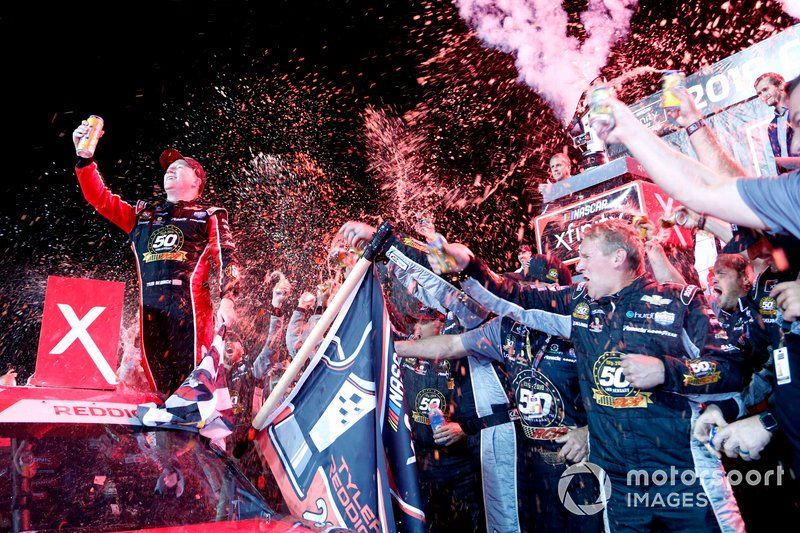
On Thursday at Phoenix Raceway, Tyler Reddick began one of the biggest weekends of his career: his first true shot at a NASCAR Cup Series championship. Forty drivers showed up to Phoenix, yet all but the Championship Four — Reddick, William Byron, and past Cup champions Joey Logano and Ryan Blaney — were eliminated from title contention. The highest Champ Four finisher in the race on Sunday would win the title.
Reddick’s title hunt came at the end of a tense week. He was the only Toyota left, since his 23XI team owner, Denny Hamlin, got eliminated on points at Martinsville Speedway, and his manufacturer teammate, Christopher Bell, was in the Championship Four for 27 minutes before getting removed for a safety violation. Byron took his place, despite allegations of race manipulation in favor of both of them. All the while, 23XI was in court with NASCAR, leaving the team’s future in jeopardy.
After doing race promotion all afternoon, Reddick walked over to me for an interview about the championship. We got derailed, as we usually do, and spent 10 minutes talking about JDM cars instead. I ask about his season, he tells me about a recent meme he saw that said movie critics use “slow burn” when they mean “boring” (I saw it too), and I eventually get to my last interview question.
“Don’t jinx yourself,” I said. “But how do you feel about Sunday?”
Reddick sat back, exhaled, and visibly relaxed.
“Really good,” he responded. “I feel really good about it.”
The making of a champion(ship contender)
NASCAR’s modern championship format for all of its national series (Cup, Xfinity and Truck) is an elimination playoff. In the Cup Series, the playoffs begin with 16 drivers. They span 10 races and four rounds; the first three elimination rounds have three races each, and the final round comes down to four drivers and one race. For this year, that race is Phoenix, and the highest finisher from the Championship Four there wins the title. A win in one round automatically sends a driver to the next, and the other spots are filled by points.
Reddick made the eight-driver round this year and wrecked himself in its first race in Las Vegas. It tanked his points position and almost killed his chance at the title. But these days, Reddick told me he’s better at separating his home life from his performance on track.
“I feel like when I was a lot younger, I wouldn’t turn that off,” Reddick said. “If it was something bad, I would drag that back home or back to the bus. Over time, I’ve gotten better about being at peace with what has happened, good or bad. I move along and allow myself to be present with my family.
“There is a point at which you can overthink yourself to death and not change anything, especially when it’s something negative. It’s important to learn from it and acknowledge it, but if you dwell on it, I just don’t think it’s healthy.”
Champion Tyler Reddick, Richard Childress Racing, Chevrolet Camaro TAME the BEAST
Photo by: Matthew T. Thacker / NKP / Motorsport Images

But remember, Reddick is a two-time champ in the second-tier Xfinity Series, securing both by winning at one of his best tracks: the 1.5-mile Homestead-Miami Speedway oval. While Xfinity isn’t the Cup Series, the experience brought him into this weekend well prepared.
“It feels so similar to when I did this when I was racing in Xfinity,” Reddick told me. “I know it’s the Cup Series. I’m racing against Cup champions. It’s at Phoenix instead of Homestead. But just the feeling, the mindset, where I’m at internally going into it, all feels very aligned with those other Championship Four appearances. It just kind of came naturally.”
Modern NASCAR: Win and you’re in
Reddick knew he had to win the next race at Homestead-Miami to make the Championship Four. He was third with two laps to go. Ahead were Hamlin and Blaney, both in the same situation: If they won, they automatically qualified for the Championship Four.
On the last lap, Reddick slid by Hamlin in the low lane in Turns 1 and 2, then catapulted past Blaney in the high lane in Turns 3 and 4 to win. His last-lap speed defied logic, and It was a finish for the history books. But during it, Reddick’s mind was on another plane.
“I just … I ended up there,” Reddick said. “I don’t know how to explain it. People talk about getting in the zone, and it felt like one of those types of things where you lock in, it happens, it’s over, and you’re like: ‘What just happened?’ That’s what it felt like, where time’s moving so fast, but at the same time, it’s not moving. It’s really trippy stuff.”

Race winner Tyler Reddick, 23XI Racing, The Beast Killer Sunrise Toyota Camry
Photo by: NASCAR Media
Reddick told me the hardest part of the NASCAR playoffs is on display once the field is down to eight drivers. Three playoff contenders won all three races in the Round of Eight, leaving one spot to qualify for the Championship Four on points. That final spot became such a dogfight that, a week later in Phoenix, everyone was still red-hot from the controversy.
“It’s hard to win in the Cup Series, and it pretty much was something you had to do to give yourself a decent shot at being here,” Reddick says. “You look at how William [Byron], Denny [Hamlin], and Bell performed at these races we had, and they were very, very strong. Kyle [Larson], you look at all the playoff points he had, right? You’d think, ‘Okay, he’s good to go all the way through.’
“But in the Round of Eight, it can get out of your control so fast if you don’t win.”
The win gave 23XI an extra week to prepare for Phoenix. After Homestead, Reddick thought about the big picture: his chance at a career-defining first Cup championship.
“I allowed myself to think about it, take it in,” Reddick says. “I absorbed that information, to then be ready to focus back in on what I need to do on the preparation side. It all felt like it happened really naturally. I didn’t have to force myself to think about this or not think about that. Everything’s just kind of falling in place. It feels as it should.”
Other factors in Phoenix: The car, strategy, and pit performance
But a championship is about more than a driver’s mindset; it’s also about the team and car. I asked Reddick’s crew chief, Billy Scott, what this weekend is like for him. He kept it practical.
“Normally, we only go through tech [inspection by the NASCAR officials] one time,” Scott said. “Our cars are basically impounded, which means there are very limited adjustments we can make throughout the weekend. We go through a 20-minute practice session right into qualifying, then it’s overnight until the race.
“This weekend, since it is the final playoff race, we go through tech when we get here, but the cars are not impounded yet. It’s just for us to get a read on where everything is. Then, we have a full practice session: 50 minutes, multiple sets of tires, and you can pretty much change anything on the car that you want to or have time to. It’s just a lot more time in the garage, a lot more opportunity to adjust on stuff, and more trips to tech.”
Scott prefers a shorter weekend format. It rewards 23XI’s pre-race preparation, he said, and it gives others less time “to science things out” based on practice speeds. But in Phoenix, 23XI had three cars in the lab: Reddick’s No. 45, Wallace’s No. 23, and Hamlin’s No. 11.
JR Houston, a friend of mine and an engineer on Wallace’s car, told me the primary goal for 23XI at Phoenix was a championship. To do that, all three cars arrived with similar setups, letting the team work as a hive mind on adjustments and driving techniques for Reddick.
“I would say 90% of our weekend is focused on making sure they’re getting everything they need,” Houston said. “If we find something that makes the car faster, we tell them about it, then we both get faster. If they get everything they need, we are going to perform well, and vice versa.”

Tyler Reddick, 23XI Racing, The Beast Unleashed Toyota Camry
Photo by: Matthew T. Thacker / NKP / Motorsport Images
NASCAR teams use off-track time to debrief, discuss adjustments, and analyze data. A lot of data comes from a system called SMT, which shows graphs and animations of the speed, revs, shifting, braking, throttle, steering, delta time, and driving line run by any car. Each weekend, Reddick’s team can see where other cars gain and lose time relative to him, and other teams can see the same for Reddick.
But the car’s speed is only part of the race. Another is pit road, where teams of five change tires and add fuel in the 8- to 10-second range. A pit-crew member’s sole job is going as fast as possible, and before the race, they spray sticky traction compounds in their pit boxes to help drivers launch.
Pit road itself is like a long, nose-to-tail parking lot, with a few empty spots. Teams choose pit boxes in order of performance, and pitting near empty spots causes less stress.
“The biggest thing for us is having an opening,” Scott tells me. “If you have an opening on the way out, you control your own destiny the most. And as long as you’re running in front of the car [pitted] behind you, it should make it to where it’s easy to get on and off pit road.”
Scott is also responsible for race strategy, which can change depending on car performance and the timing of cautions. NASCAR teams can take two tires, four tires, no tires, scuff tires, new tires — a bunch of combinations — during a race. They can also pit early or late, depending on how it’ll impact speed and track position when they exit pit road.
The season finale in Phoenix is 312 laps, and Cup cars can run 95 laps on a tank of fuel. A “short run” in the Cup car at Phoenix maxes out at about 30 laps due to tire degradation: Tires wear more harshly during that time, then plateau and degrade much more slowly for the long run to 95.
“It’s important to have long-run speed,” Scott told me. “If you’ve got that, you’ll be okay.”
The ups and downs of championship weekend
On Friday, Reddick ran the 21st-fastest lap in practice — the fourth of four championship cars. Blaney led, Byron ran fourth, and Logano ninth. Hamlin and Wallace, in similar cars to Reddick, ran eighth and 11th, respectively. They spent the night working to close the gap.
“Throughout practice, if the driver’s fighting a certain handling condition, we’ll mark down laps,” Houston told me. “When we debrief, we’re not sitting there looking through 60 laps of data. We’re looking for this very specific example of when they did something either similar or different and how it affected their corner.
“In practice, Bubba was a little more comfortable with the car. We debriefed for an hour about how the cars felt different, and because they’re so similar, we know that it’s the drivers making the difference. By being similar, we can teach each other.”
The next day, Reddick clocked 10th in qualifying — a massive improvement. Logano qualified second, Byron eighth, and Blaney 17th.
“We know what we need to work on, and we’ve been talking about it and coming up with a plan for Sunday,” Reddick told the media after qualifying. “I have a good sense of what I need to be focused on, and how we as a team need to keep up with the race car. But obviously, we have to wait and see how the race goes.”
On Sunday’s pre-race grid, minutes before the cars rolled off pit road, Reddick’s friends and family hugged him and wished him luck. That’s normal in NASCAR: Drivers are swarmed, with no time alone, until they step into the car.
Reddick fired off 10th, then spent the first part of the race there. He was strategically aggressive on restarts, and his pit stops were consistent all day. By normal standards, it was a great performance. But by championship standards, Reddick lacked the long-run speed the other Championship Four cars had.
There were only four cautions in the race: one for an early wreck, two planned ones for stage breaks, and one for a crash on lap 251 of 312. The final green-flag run lasted more than 50 laps, and during it, Blaney charged from several seconds behind his teammate, Logano, to Logano’s back bumper. Logano held Blaney off to win a third Cup championship, while Byron finished third in the race and Reddick sixth.
On a normal day, sixth is great. In the championship, it’s not enough.
“We did all that we could, I think,” Reddick told the media in a post-race press conference. “But it’s tough when they just get further and further away over time. We put up a good fight. We didn’t make any mistakes that took ourselves out of it. We fought as hard as we could. We made the car better throughout the day. We did what we needed to do.
“Unfortunately, we just didn’t quite have the speed or restarts we needed to get ahead and hold those guys up, or really put up a fight there at the very end.”
William Byron, Hendrick Motorsports, Joey Logano, Team Penske, Ryan Blaney, Team Penske, Tyler Reddick, 23XI Racing
Photo by: NASCAR Media
Reddick stepped off the press-conference stage, walked by, and gave me a half-smile that says: “I tried my best.” I nodded — “I know you did” — and remembered what he told me about the championship on Thursday.
“You just have to come to terms with it, whatever the outcome,” Reddick said. “If you win the championship, it’s a great thing. But there’s a three-in-four chance that it doesn’t happen, and you have to be able to come to terms with that. I think you can do that if you go into this weekend knowing you’ve prepped all you can prep, covered all your bases, and made sure all the details are where they need to be.
“Yes, it’s hard to walk away from a weekend if it doesn’t work out. But it’ll allow us to digest it better knowing that we have no regrets. We did everything that we could do to win it.”
Motorsports
Radioactive: Cup Series Championship 'What the f—? F—- this f—–' | NASCAR on FOX
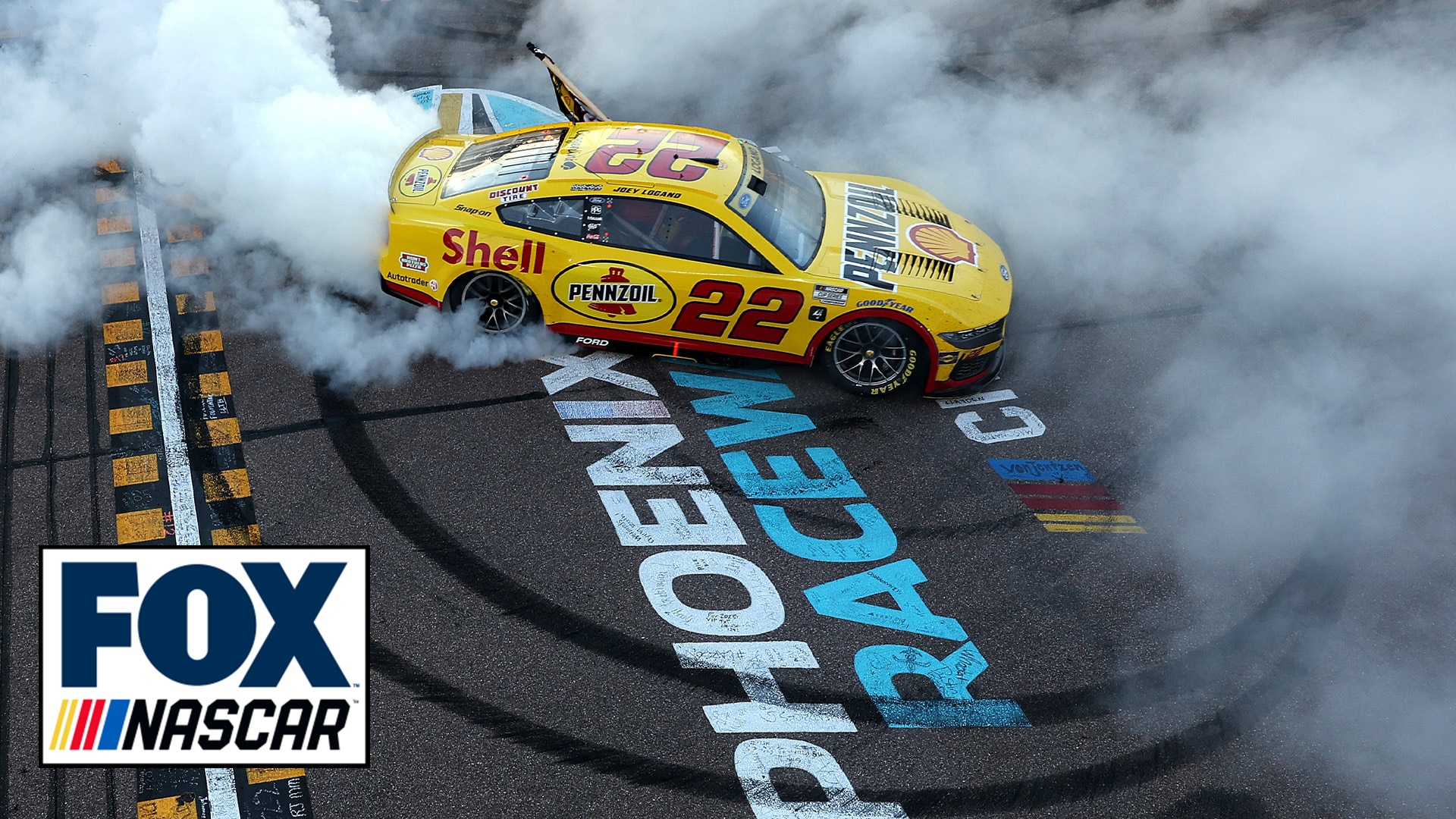

Radioactive for the NASCAR Cup Series Championship at Phoenix Raceway in Avondale, Arizona.
Motorsports
FIA approves driver cooling kits from 2025 in F1
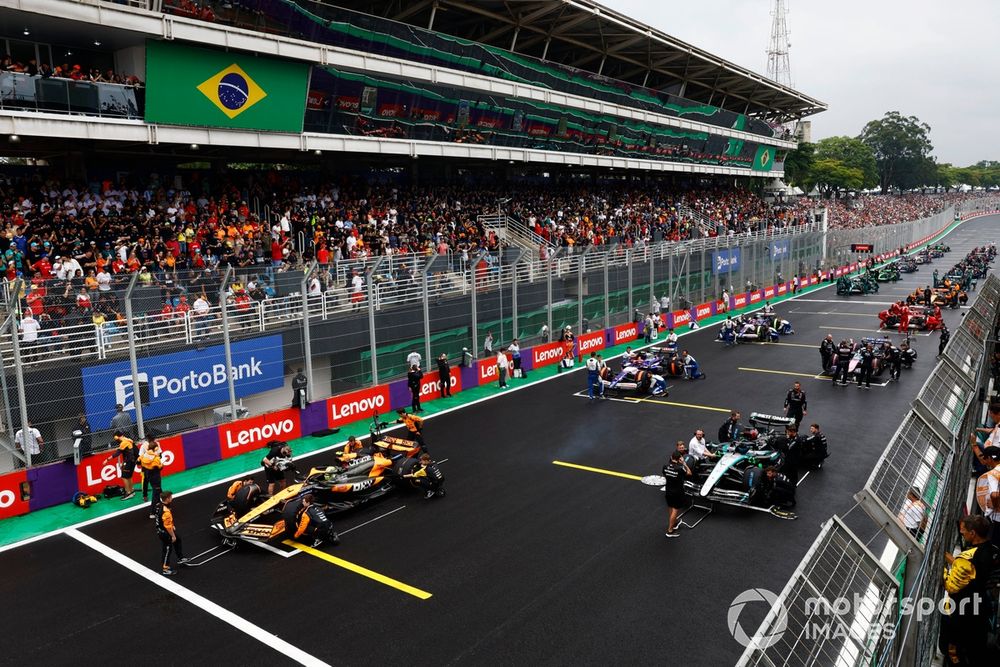
The FIA’s Formula 1 Commission has approved the introduction of driver cooling kits for the 2025 season, to be used in extreme heat conditions.
Driver cooling has become a topic since the 2023 Qatar Grand Prix, with several drivers suffering from symptoms of heat exhaustion after the chequered flag.
As first reported by Motorsport.com in July, the FIA and all F1 teams initiated research to improve the venting and cooling of drivers in such extreme conditions.
Initial proposals involved fitting a simplified air conditioning system to the cars but while exact technical details are yet to emerge, Motorsport.com understands the solution now agreed between the FIA, F1 and all teams involves a simplified system that no longer requires an AC unit.
The system will only be mandated by the FIA in extreme heat conditions, with the minimum weight of the cars increased correspondingly when applicable.
The Commission also agreed to change the protocol for closing up the grid whenever certain cars don’t make it to the start of a race. The issue came up in Brazil when Williams driver Alex Albon failed to make the start after a heavy crash in that morning’s qualifying session, with his team unable to repair the car due to the compressed timetable.
Mechanics clear the grid prior to the start
Photo by: Zak Mauger / Motorsport Images

Albon’s car was withdrawn long before the race, but per the existing grid protocols the definitive starting grid had already been set and his seventh place on the grid was still left vacated.
Motorsport.com understands the FIA will now tighten up its procedure by forming the final grid one hour before the start at the latest. That means cars that are withdrawn up to 75 minutes before the start will be not be included in the final grid, and the following cars can all move up the relevant positions to close up the grid.
During the Geneva meeting the Commission, which was chaired by the FIA’s head of single-seaters Nikolas Tombazis and F1 CEO Stefano Domenicali, also tidied up elements of the 2025 financial rules, approving expanded exemptions against the cost cap for costs relating to sustainability initiatives.
The meeting discussed the progress that has been made on the 2026 technical regulations to improve the performance levels by increasing downforce, as recently explained by Tombazis. The statement said the FIA is confident that the much-discussed technical regulations for 2026 will be ready in time for approval by the FIA World Motor Sport Council after the conclusion of the 2024 season.
There have also been revisions to the FIA sporting regulations to incorporate gender-neutral language, removing certain masculine pronouns and other gendered language. Similar tweaks had already been made to the sporting regulations of F2 and F3 late last year.
Motorsports
Like Johnson before him, has Logano cracked the playoff format?
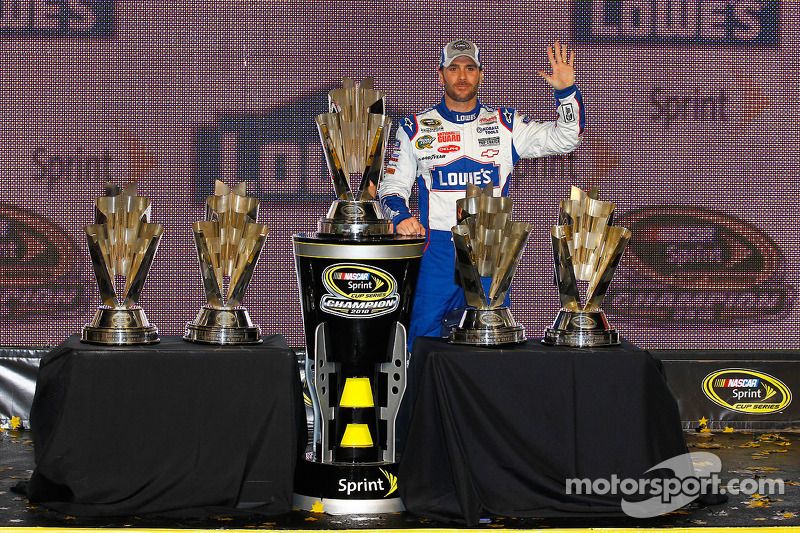
It’s shocking to think NASCAR’s playoff format has been around for 20 years. Its Chase for the Cup, the original ‘new’ playoff format, kicked off in 2004. In its first three years, it produced three champions from three different organizations. It seemed to be accomplishing exactly what NASCAR intended it to do, keeping the title fight interesting to the very end. And then came along Jimmie Johnson, Chad Knaus, and the No. 48 Hendrick Motorsports team to smash their hopes into a million Lowe’s-colored pieces.
NASCAR has always been keen to tweak the format, and come 2014, the series’ complete overhaul stunned the racing world. The new, multi-round elimination format would hopefully ensure no single driver could ever game the system like that again. Except, after Joey Logano’s third title win in Phoenix, along with Team Penske clinching a third consecutive Cup title, you have to wonder if maybe they’d successfully accomplished NASCAR’s nightmare: Cracking the code to winning the playoff game as the No. 48 once did.
Championship victory lane: NASCAR Sprint Cup Series 2010 champion Jimmie Johnson, Hendrick Motorspor
Photo by: Motorsport.com / ASP Inc.

Think of it this way, Logano is this format’s Jimmie Johnson. Now, stay with me because I’m not saying Logano has had Johnson-esque seasons. But he is the only driver to win three titles in this format, collecting three of the last seven Cup championships. After last weekend’s 1-2, Penske has now won three consecutive which hasn’t been done since the Johnson era. Obviously, it’s not the five years of dominance the Johnson/Knaus enjoyed, but it’s still quite the feat for a format designed to ensure any sort of dominance or consistent winning is prevented. Yet, no driver has made more final four appearances than Logano.
A look at the years where Logano has won reveals a common trend: Every single time he won the Cup, he always won the first race in the Round of 8 too. Logano advanced on by shoving Martin Truex Jr. out of the way to win Martinsville in 2018, out-dueled Ross Chastain at Vegas in 2022, and bested everyone in a fuel-mileage race at Vegas in 2024. For the two weeks that followed these critical race wins, his team focused solely on the finale, enough that he usually ran terribly at the races in between. Yet he’d then go on to win the finale and title. He never won more than two races during the 26-race regular season of any of these title runs either, but he did win when it mattered most.
Beware the 48…and now the 22?
When the Chase for the Cup kicked off each year, everyone knew that they had to accept Johnson and the No. 48’s eventual success. It wouldn’t (and didn’t) matter what sort of season they had up to that point. Johnson and team always found a way in through those final ten races. Hell, he even managed to win a couple more titles as NASCAR changed the format around on him, including his record-tying seventh title in the Championship 4 era. That actually would be the first time Johnson had ever won at Homestead, because in all of the years before that, he never needed to (points racing was still a crucial part of the old playoff format). Like Logano, he did exactly what he needed to do, when he needed to do it, and benefited greatly because of it.
These teams basically used the first 26 race weeks to prepare and perfect their cars for the races that truly mattered. Just look at Logano earlier in the year. His crew always seemed to be figuring things out and stumbling over themselves at the start of these seasons that lead into title wins. In 2024, he had just one top-five finish in the first 14 races. In 2022, Logano was a third of the way through the season before he even won a race. In 2018, it was the same story again, with a single superspeedway victory during the entirety of the regular season.
Logano’s consistent approach of winning — when he needed to — is extremely reminiscent of the Hendrick No. 48 of the late 2000s. Again, Logano isn’t dominating like Johnson did, but that’s not what this particular format demands. We’re looking at a format where you can technically win the Daytona 500, DNF the next 25 races, then proceed to bounce through each round on the back of race wins and capture the big prize.
If you can make the playoffs and survive the first two rounds, you’re only one win away from being within reach of the crown. It’s frustrating to many as Logano is taking mostly average seasons, like his 17.1 average finish this year, the lowest-ever for a championship-winning driver, and turning them into gold, but he’s simply gaming the system better than those around them, just like the No. 48 of old.
Ryan Blaney, Team Penske, Menards/Richmond Water Heaters Ford Mustang and Joey Logano, Team Penske, Shell Pennzoil Ford Mustang
Photo by: Nigel Kinrade / NKP / Motorsport Images

And this had bled over to his Penske teammate Ryan Blaney, who earned only one regular season win in 2023 and two in 2024 before collecting playoff wins at the most critical moments — including the Round of 8. Where Blaney differs from Logano is that he tends to win the closing race of that penultimate round instead of the opener.
On the flip side, and what makes the two different, is the majority of Johnson’s wins during that five-year run were earned during the regular season. Why? Because — and I know I’m repeating myself but I want to emphasize this — that’s what the format demanded. The final ten races worked as a sort of a mini-season with the most points over those ten weeks serving as the path towards the title. There were still bonus points, but they came from wins during the regular season, so that’s what he did while remaining consistent in the finals stretch.
While still a force of nature in the postseason, 22 of Johnson’s 35 wins between 2006 and 2010 came during the regular season. He only went out to win a bunch of playoff races when he couldn’t shake his rivals. For example, in 2007, he was trailing Hendrick Motorsports teammate Jeff Gordon halfway through the postseason, so like flipping a switch, Johnson proceeded to win four of the last five races, crushing the hopes of his fellow Hall of Famer.
Joey Logano, Team Penske, Shell Pennzoil Ford Mustang, winner, Burn Out
Photo by: Gavin Baker / NKP / Motorsport Images

As for Logano, he wasn’t always like this. Looking at the strongest season of his career (2015), he finished sixth in points. That year, he appeared to go 100% in every single playoff race whether he was locked into the next round or not. He ended up sweeping an entire round, which has never been done by anyone else in this format (although Larson did win three in a row across two rounds in 2021).
But Logano didn’t make it to the Championship 4 that year because in his quest to win no matter what, he drew the ire of Matt Kenseth by spinning him out in the battle for the win. Kenseth took revenge at Martinsville while Logano was leading, sinking his 2015 title bid. Maybe he learned something from that, as what we’re seeing now is a far more decisive Logano who is aggressive, but only when it matters. Perhaps Kenseth did him a favor that day, helping to shape the three-time champion we now know.
The Chase for the Cup had Johnson and people hated it because he was too dominant. The elimination format today has Logano, but people hate it because he’s not dominant enough during the year. When NASCAR used a season-long format, people hated that a driver [Kenseth] with a single win in March could point their way to the title. No matter the system, someone is going to figure it out how to hack it and take advantage of that opportunity. That’s just how it is. Logano and Team Penske together appear to have harvested that power. We’ll see if they continue to put it to use for another title in 2025.
Motorsports
2024 MotoGP Barcelona Grand Prix – How to watch, session times & more
Following heavy flooding in Valencia, MotoGP has moved the venue for the season finale to Circuit de Barcelona-Catalunya. The race will officially be called as the Solidarity Grand Prix of Barcelona, with all proceeds going to those affected by the natural disaster in Valencia.
Barcelona already held a round earlier in the year, but the stakes will be higher this time as Jorge Martin and Francesco Bagnaia battle for the 2024 riders’ title. The odds are in the favour of Martin, who holds a 24-point lead going into the weekend and has a chance of sealing the title as early as Saturday’s sprint race.
10:45
Barcelona GP – FREE PRACTICE 1
Barcelona GP – PRACTICE Barcelona GP – FREE PRACTICE 2
Barcelona GP – QUALIFYING 1
Barcelona GP – QUALIFYING 2
Barcelona GP – SPRINT Barcelona GP – WARM UP
Barcelona GP – Race
Event
Date
2024 MotoGP Barcelona Grand Prix session timings in different timezones
|
Session |
GMT |
CET |
ET |
PT |
AEDT |
JST |
IST |
|---|---|---|---|---|---|---|---|
|
FP1 |
09:45 |
10:45 |
04:45 |
01:45 |
20:45 |
18:45 |
15:15 |
|
FP2 |
14:00 |
15:00 |
09:00 |
06:00 |
01:00¹ |
23:00 |
19:30 |
|
FP3 |
09:10 |
10:10 |
04:10 |
01:10 |
20:10 |
18:10 |
14:40 |
|
Qualifying |
09:50 |
10:50 |
04:50 |
01:50 |
20:50 |
18:50 |
15:20 |
|
Sprint |
14:00 |
15:00 |
09:00 |
06:00 |
01:00¹ |
23:00 |
19:30 |
|
Warm up |
08:40 |
09:40 |
03:40 |
00:40 |
19:40 |
17:40 |
14:10 |
|
Race |
13:00 |
14:00 |
08:00 |
05:00 |
00:00¹ |
22:00 |
18:30 |
2024 MotoGP Barcelona Grand Prix session timings in the UK and Portugal
Friday 15th November 2024
- Free Practice 1: 09:45 – 10:30 GMT
- Free Practice 2: 14:00 – 15:00 GMT
Saturday 16th November 2024
- Free Practice 3: 09:10 – 09:40 GMT
- Qualifying: 09:50 – 10:30 GMT
- Sprint: 14:00 GMT
Sunday 17th November 2024
- Warm up: 08:40 – 08:50 GMT
- Race: 13:00 GMT
2024 MotoGP Barcelona Grand Prix session timings in Europe
Friday 15th November 2024
- Free Practice 1: 10:45 – 11:30 CET
- Free Practice 2: 15:00 – 16:00 CET
Saturday 16th November 2024
- Free Practice 3: 10:10 – 10:40 CET
- Qualifying: 10:50 – 11:30 CET
- Sprint: 15:00 CET
Sunday 17th November 2024
- Warm up: 09:40 – 09:50 CET
- Race: 14:00 CET
2024 MotoGP Barcelona Grand Prix session timings in the US (Eastern Time)
Friday 15th November 2024
- Free Practice 1: 04:45 – 05:30 ET
- Free Practice 2: 09:00 – 10:00 ET
Saturday 16th November 2024
- Free Practice 3: 04:10 – 04:40 ET
- Qualifying: 04:50 – 05:30 ET
- Sprint: 09:00 ET
Sunday 17th November 2024
- Warm-up: 03:40 – 03:50 ET
- Race: 08:00 ET
2024 MotoGP Barcelona Grand Prix session timings in the US (Pacific Time)
Friday 15th November 2024
- Free Practice 1: 01:45 – 02:30 PT
- Free Practice 2: 06:00 – 07:00 PT
Saturday 16th November 2024
- Free Practice 3: 01:10 – 01:40 PT
- Qualifying: 01:50 -02:30 PT
- Sprint: 06:00 PT
Sunday 17th November 2024
- Warm-up: 00:40 – 00:50 PT
- Race: 05:00 PT
2024 MotoGP Barcelona Grand Prix session timings in Australia
Friday 15th November 2024
- Free Practice 1: 20:45 – 21:30 AEDT
Saturday 16th November 2024
- Free Practice 2: 01:00 – 02:00 AEDT
- Free Practice 3: 20:10 – 20:40 AEDT
- Qualifying: 20:50 – 21:30 AEDT
Sunday 17th November 2024
- Sprint: 01:00 AEDT
- Warm-up: 19:40 – 19:50 AEDT
Monday 18th November 2024
2024 MotoGP Barcelona Grand Prix session timings in Japan
Friday 15th November 2024
- Free Practice 1: 18:45 – 19:30 JST
- Free Practice 2: 23:00 – 00:00 JST
Saturday 16th November 2024
- Free Practice 3: 18:10 – 18:40 JST
- Qualifying: 18:50 – 19:30 JST
- Sprint: 23:00 JST
Sunday 17th November 2024
- Warm-up: 17:40 – 17:50 JST
- Race: 22:00 JST
2024 MotoGP Barcelona Grand Prix session timings in India
Friday 15th November 2024
- Free Practice 1: 15:15 – 16:00 IST
- Free Practice 2: 19:30 – 20:30 IST
Saturday 16th November 2024
- Free Practice 3: 14:40 – 15:10 IST
- Qualifying: 15:20 – 16:00 IST
- Sprint: 19:30 IST
Sunday 17th November 2024
- Warm-up: 14:10 – 14:20 IST
- Race: 18:30 IST
Can’t find your country or region in the list? Check the MotoGP schedule page for the broadcast times in your local timezone.
Can I stream the Barcelona Grand Prix?
MotoGP has its own on-demand streaming service, offering live broadcast of practice, qualifying and the Sprint, as well as highlights. The MotoGP Video pass is available for an annual fee of 139.99 euros. Several local broadcasters also stream MotoGP races on their official websites
Motorsports
The Driver-FIA Battle Intensifies and More – Autosport Answers Your Questions
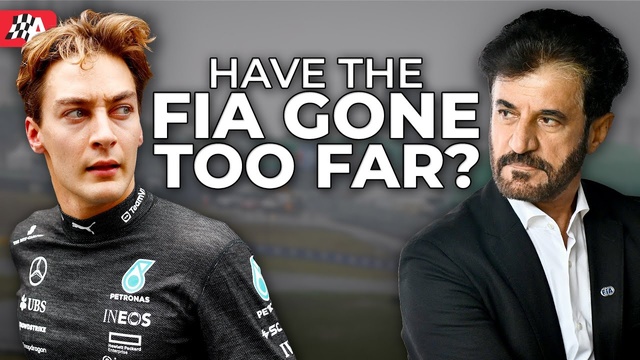
With a large amount of recent news to dissect, Bryn Lucas chats with Kevin Turner and Alex Kalinauckas to answer your questions. Topics include the departure of the FIA’s F1 Race Director Niels Wittich and his reported firing, the shocking statement from the Grand Prix Drivers Association, Alpine’s confirmed purchasing of Mercedes power units and gearboxes for 2026, Dan Fallows stepping down as Aston Martin’s technical director, and F1 having a huge live show to launch the 2025 season, and why it’s seen as a “travesty” by Alex. If you have any questions, be sure to leave them in the comments below! #f1 #fia #gpda
FOLLOW us online:
Website: https://www.autosport.com/
Facebook: http://facebook.com/AUTOSPORT
Twitter: https://twitter.com/autosport
Instagram: http://instagram.com/autosport
Motorsports
Watch this incredibly fun 2008 F1 season wrap-up set to My Chemical Romance
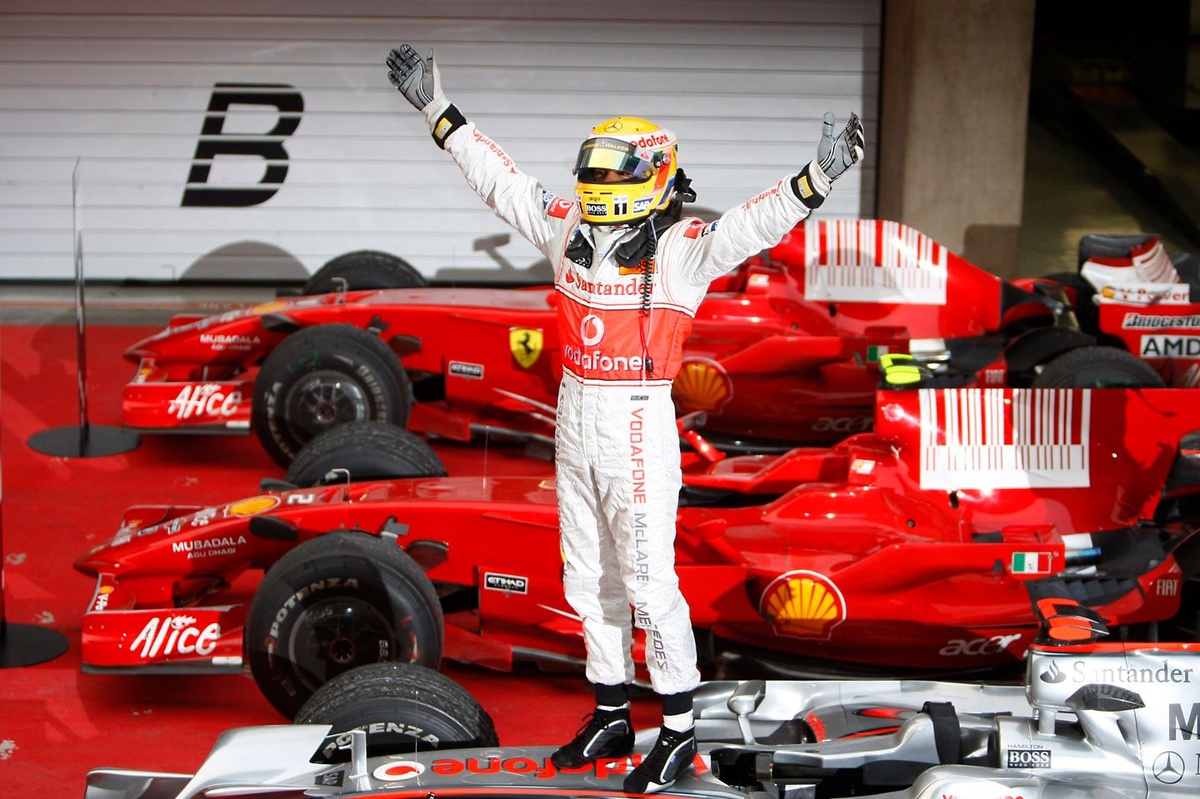

Welcome to the 2008 Formula 1 grid: Lewis Hamilton clinched his maiden world championship, Red Bull was on the brink of dominance, and everyone was embracing their emo phase. A resurfaced video from the final race of the season showed key members of the paddock, including most of that season’s drivers, lip syncing My Chemical Romance’s punk rock hit, “Welcome to the Black Parade.”
If that’s a string of words you never expected to read in a sentence, you should remember that the late 2000s had a very different vibe. The endearing clip, which has the feel of a middle-school iMovie project, was actually an ITV production that aired before the last race of the season in Brazil.
For those still new to F1, ITV held the series’ broadcast rights in the UK from 1997 to 2008, totaling 206 Grands Prix over 12 years (BBC regained the rights in 2009, but agreed to a deal with Sky Sports just two years later). The network was credited with changing the way we consume F1 by producing more interviews, better camera angles, and in-depth reporting. However, it was heavily criticized for interrupting races with commercials, ultimately missing over 31 races’ worth of live action. Notably, the ad breaks meant viewers didn’t get to see Damon Hill’s stunning pass on Michael Schumacher at the 1997 Hungarian Grand Prix or the gearbox issue that dashed Hamilton’s title hopes at Interlagos in 2007, among other pivotal moments.
But let’s get back to the video: long before lip-syncing-as-entertainment was normalized by TikTok, ITV tapped a few familiar faces to help them say goodbye to the sport. While drivers like Hamilton, Mark Webber and Nico Rosberg only made brief appearances, others were clearly very enthusiastic about the task at hand.
David Coulthard, along with future world champions Jenson Button and Sebastian Vettel fully embraced the emo spirit, playing air guitar and dancing around while mimicking the American emo band. Martin Brundle, Ted Kravitz, Steve Rider, James Allen (who has since joined Motorsport Network), and the late Murray Walker were also featured in the video, before ITV made a self-deprecating reference to their significant number of commercial breaks.
It was followed by clips of some of the most iconic on-track moments of the previous decade, a brief David and Victoria Beckham cameo, and concluded with an ode to Hamilton’s first title. “Surely the first of many for Lewis Hamilton, the world is at his feet,” the commentator accurately predicted at the end of the clip. Watch the full video below and see who else you spot.
-
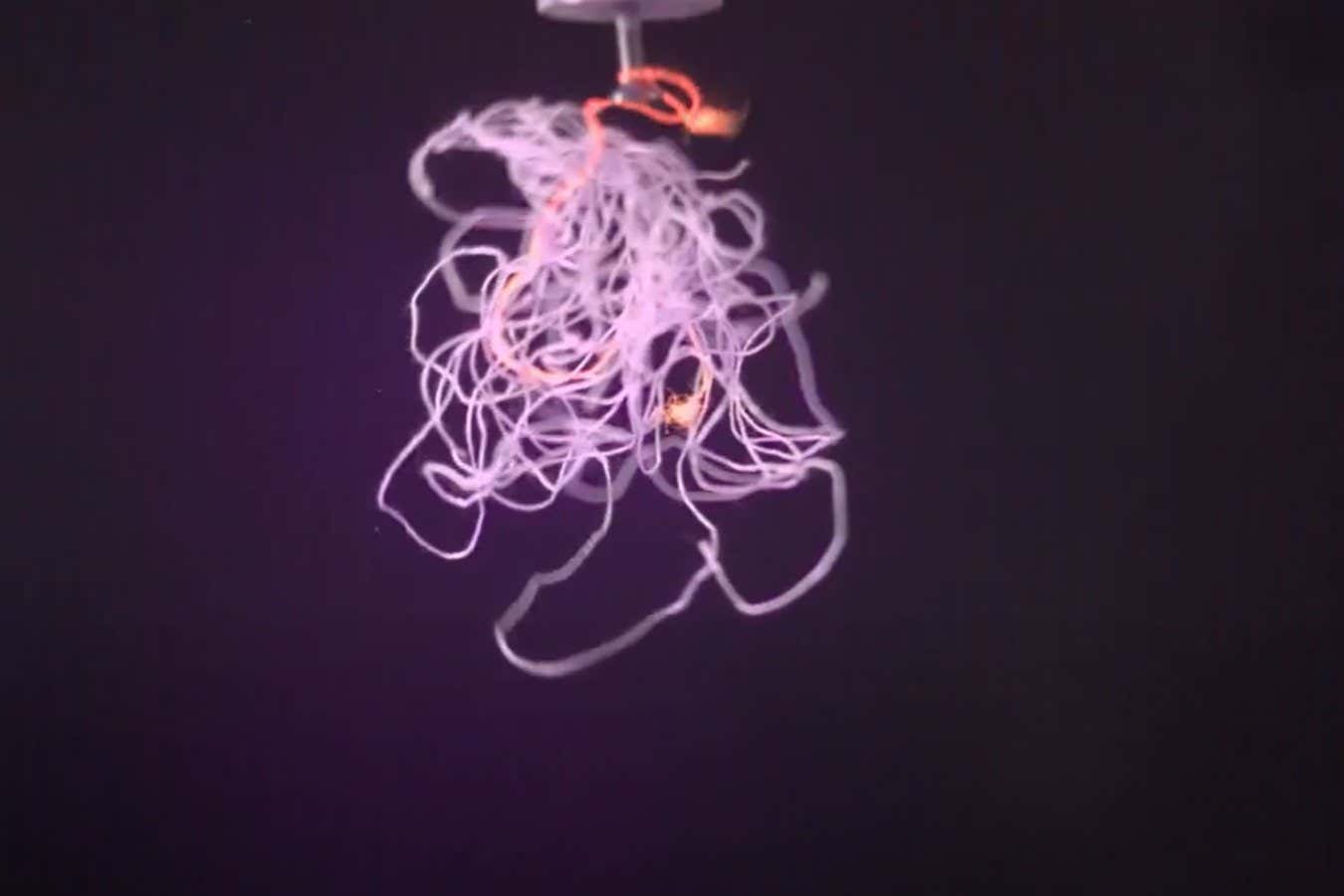
 Science & Environment2 months ago
Science & Environment2 months agoHow to unsnarl a tangle of threads, according to physics
-

 Technology2 months ago
Technology2 months agoWould-be reality TV contestants ‘not looking real’
-

 Technology2 months ago
Technology2 months agoIs sharing your smartphone PIN part of a healthy relationship?
-
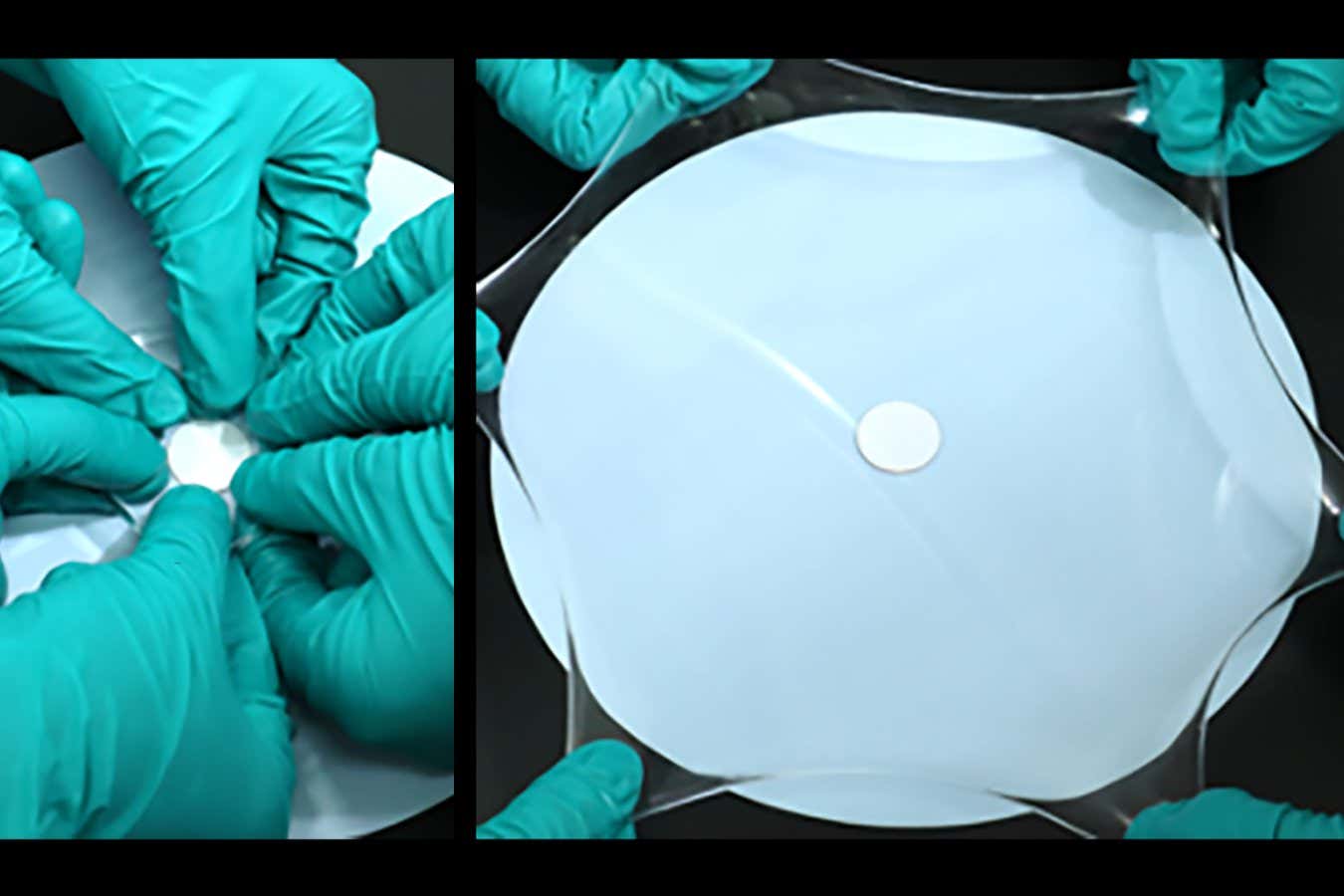
 Science & Environment2 months ago
Science & Environment2 months agoHyperelastic gel is one of the stretchiest materials known to science
-
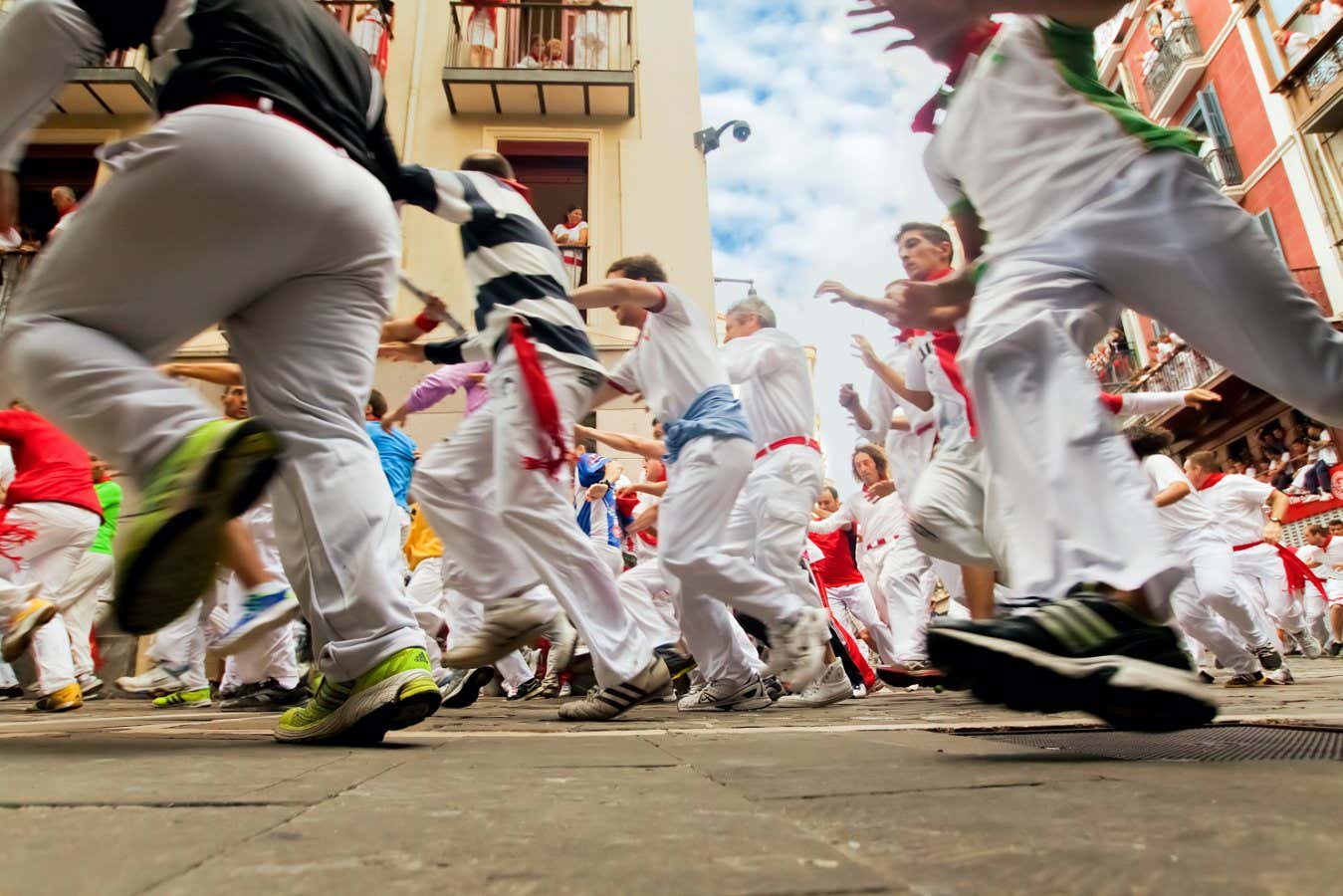
 Science & Environment2 months ago
Science & Environment2 months ago‘Running of the bulls’ festival crowds move like charged particles
-
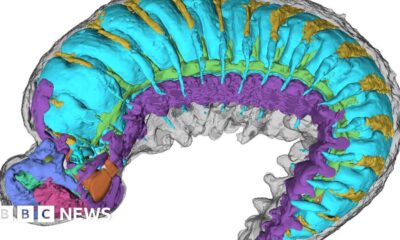
 Science & Environment2 months ago
Science & Environment2 months agoX-rays reveal half-billion-year-old insect ancestor
-
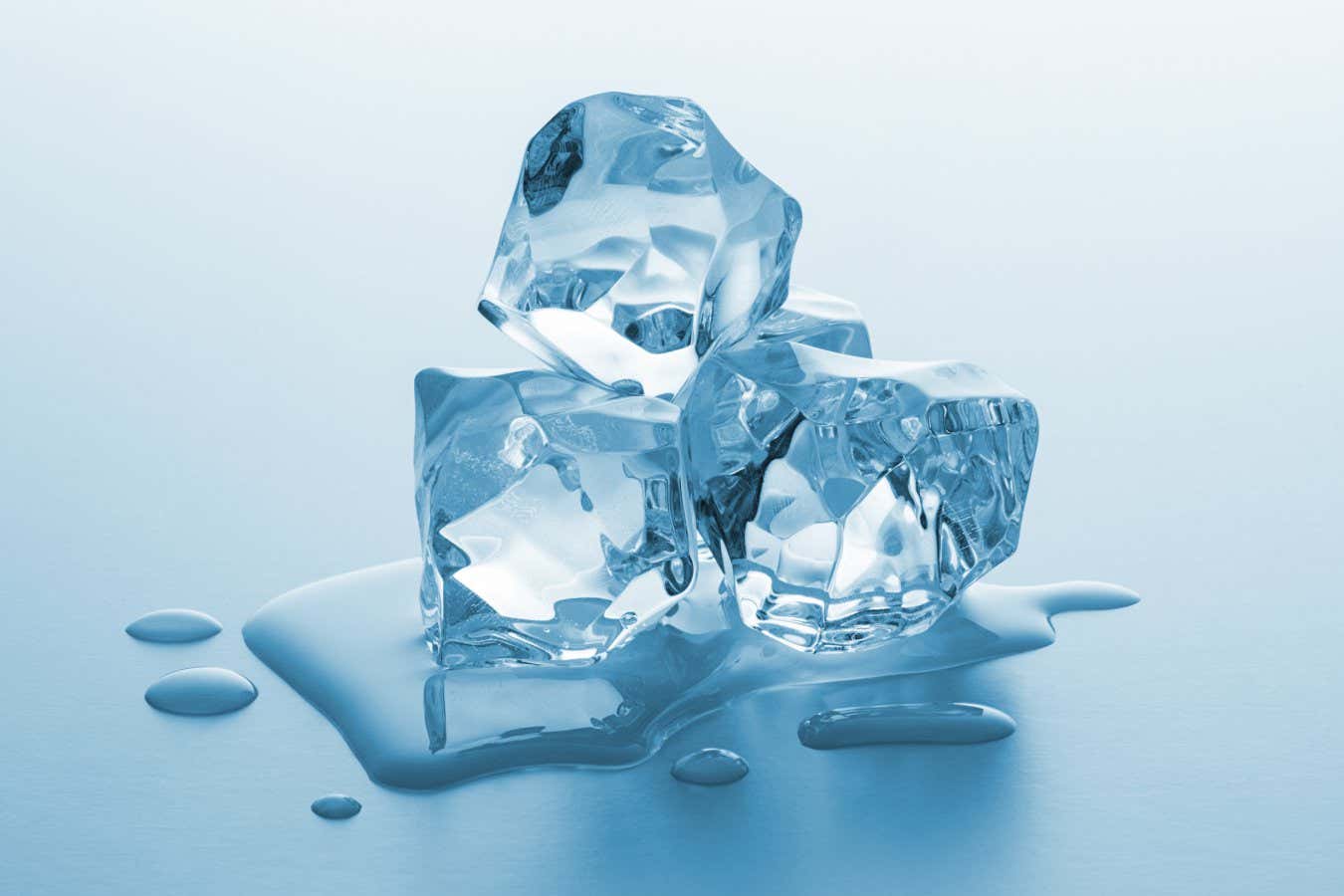
 Science & Environment2 months ago
Science & Environment2 months agoPhysicists have worked out how to melt any material
-

 News1 month ago
News1 month ago‘Blacks for Trump’ and Pennsylvania progressives play for undecided voters
-
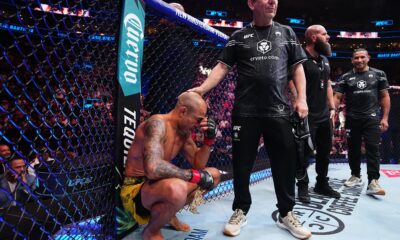
 MMA1 month ago
MMA1 month ago‘Dirt decision’: Conor McGregor, pros react to Jose Aldo’s razor-thin loss at UFC 307
-

 News1 month ago
News1 month agoWoman who died of cancer ‘was misdiagnosed on phone call with GP’
-

 Money1 month ago
Money1 month agoWetherspoons issues update on closures – see the full list of five still at risk and 26 gone for good
-

 Sport1 month ago
Sport1 month agoAaron Ramsdale: Southampton goalkeeper left Arsenal for more game time
-
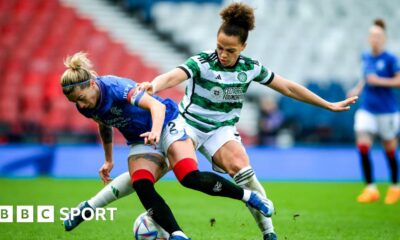
 Football1 month ago
Football1 month agoRangers & Celtic ready for first SWPL derby showdown
-

 Sport1 month ago
Sport1 month ago2024 ICC Women’s T20 World Cup: Pakistan beat Sri Lanka
-
Business1 month ago
how UniCredit built its Commerzbank stake
-

 Science & Environment2 months ago
Science & Environment2 months agoA new kind of experiment at the Large Hadron Collider could unravel quantum reality
-

 Science & Environment2 months ago
Science & Environment2 months agoMaxwell’s demon charges quantum batteries inside of a quantum computer
-
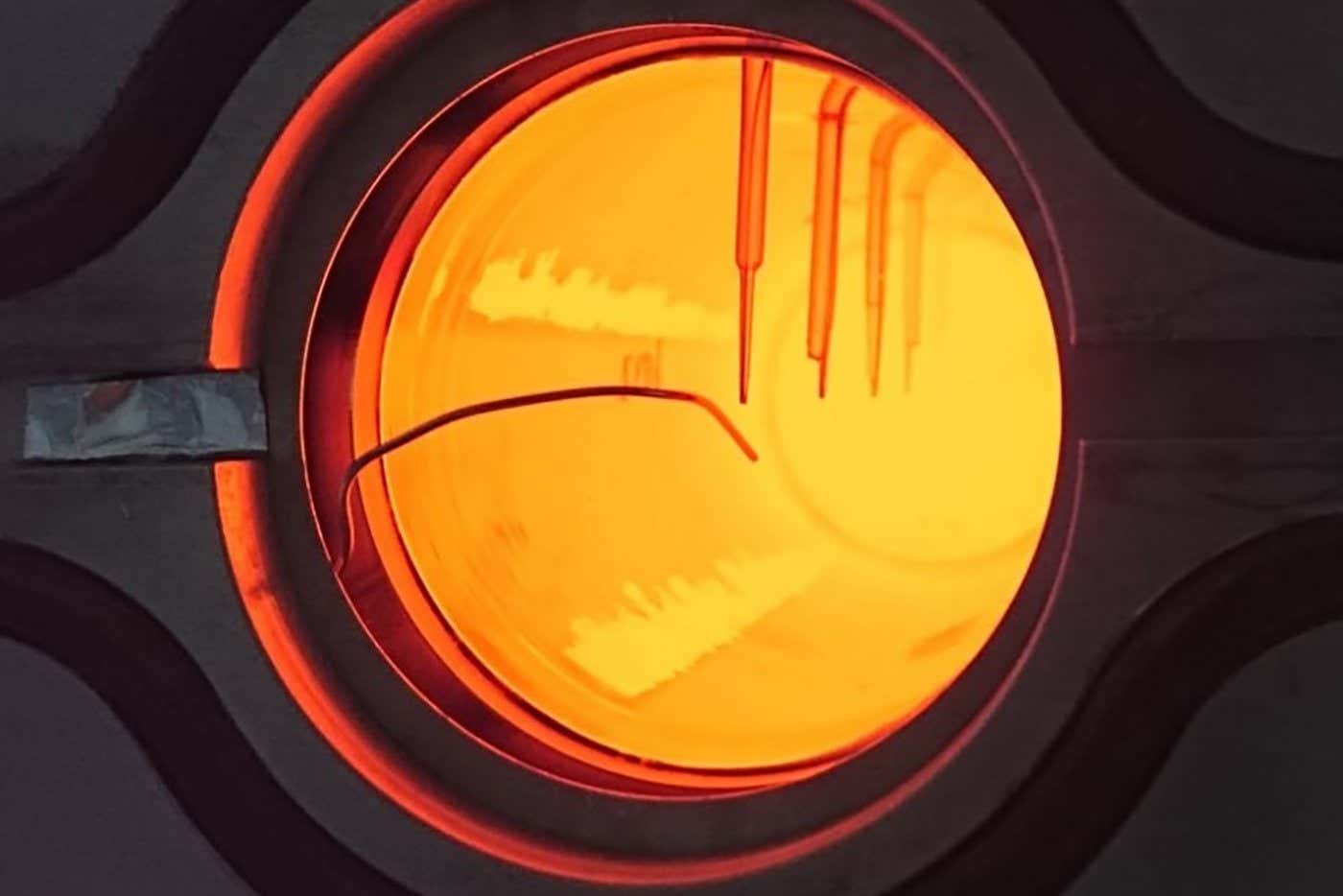
 Science & Environment2 months ago
Science & Environment2 months agoSunlight-trapping device can generate temperatures over 1000°C
-
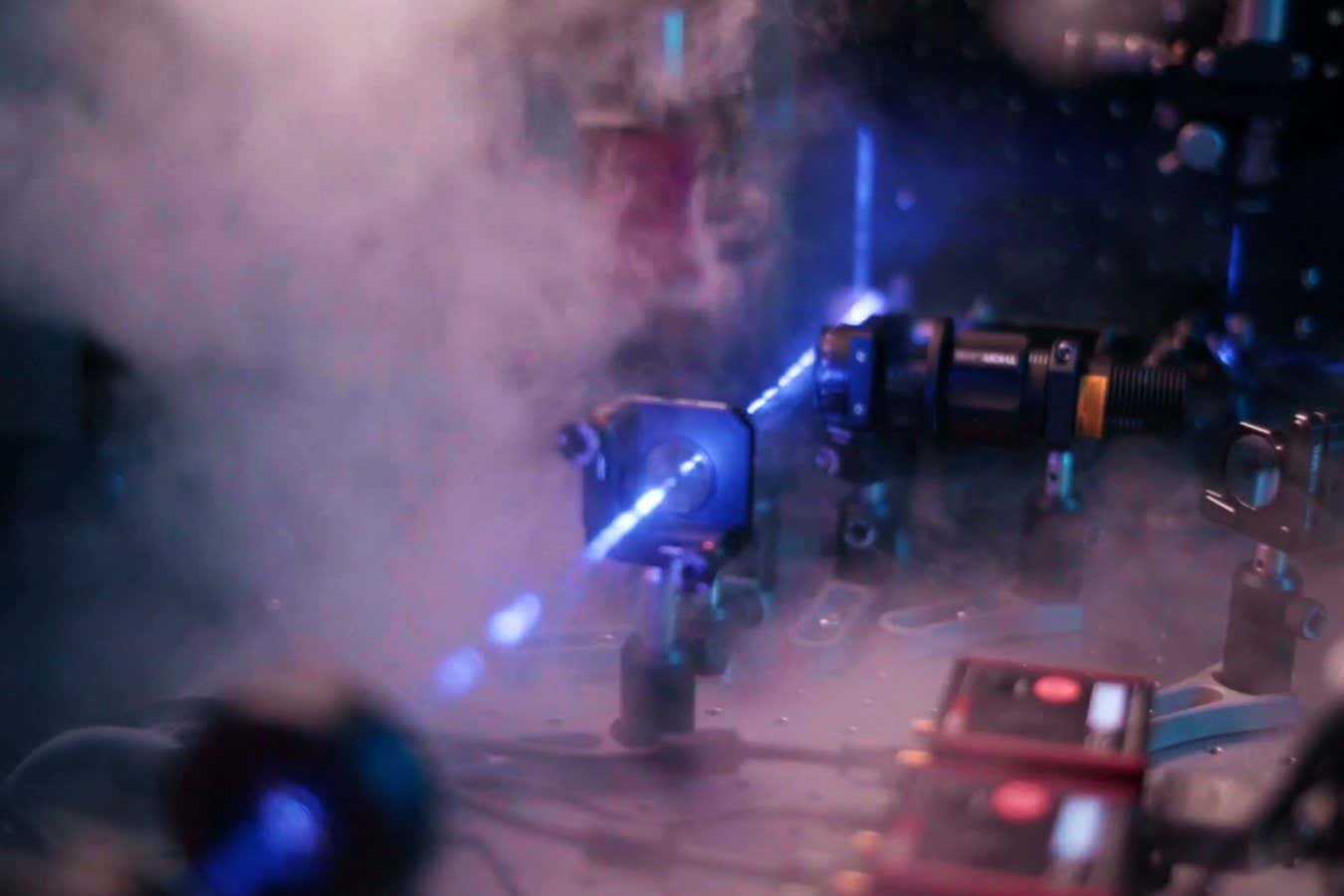
 Science & Environment2 months ago
Science & Environment2 months agoLiquid crystals could improve quantum communication devices
-
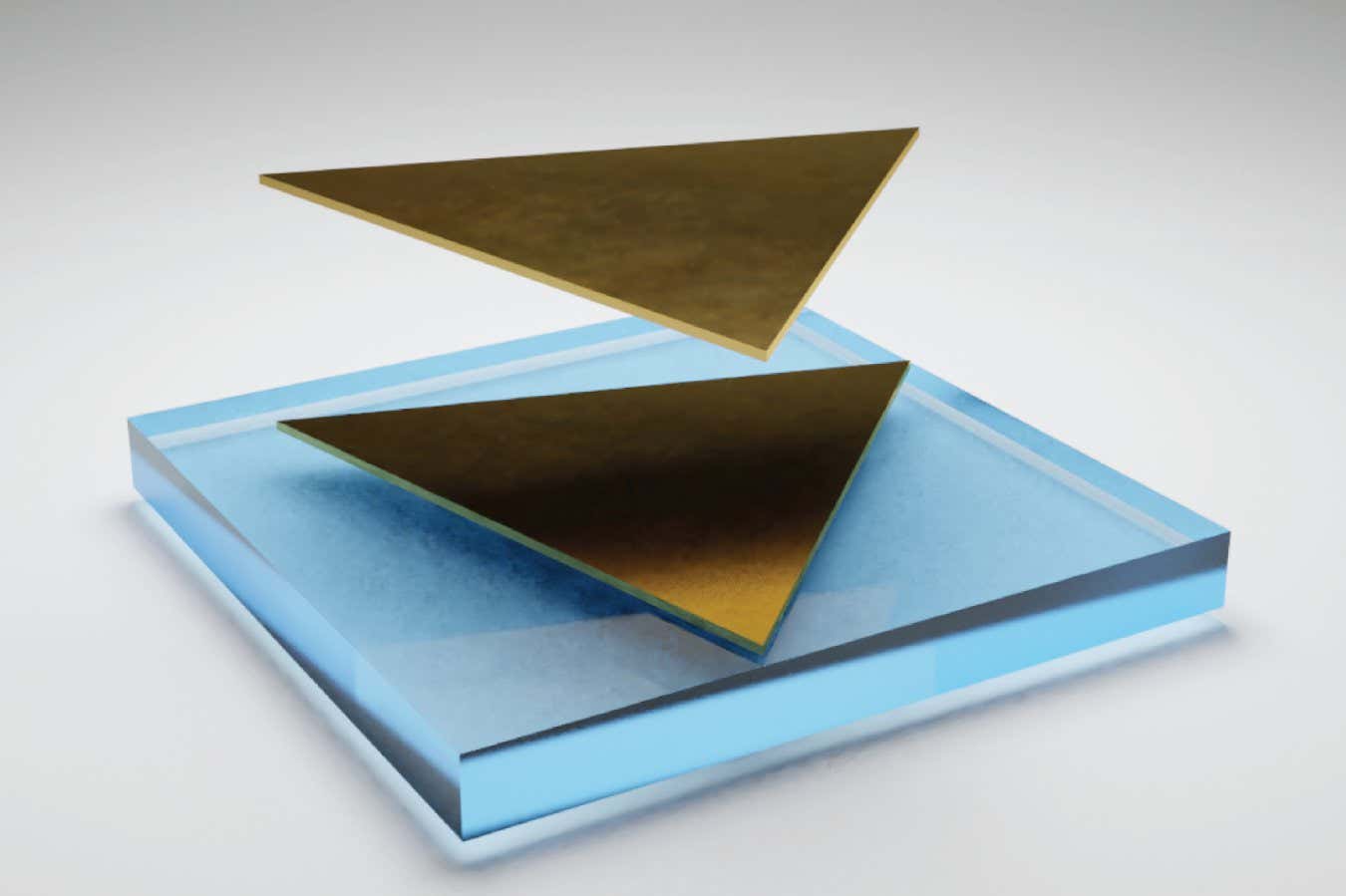
 Science & Environment2 months ago
Science & Environment2 months agoQuantum forces used to automatically assemble tiny device
-
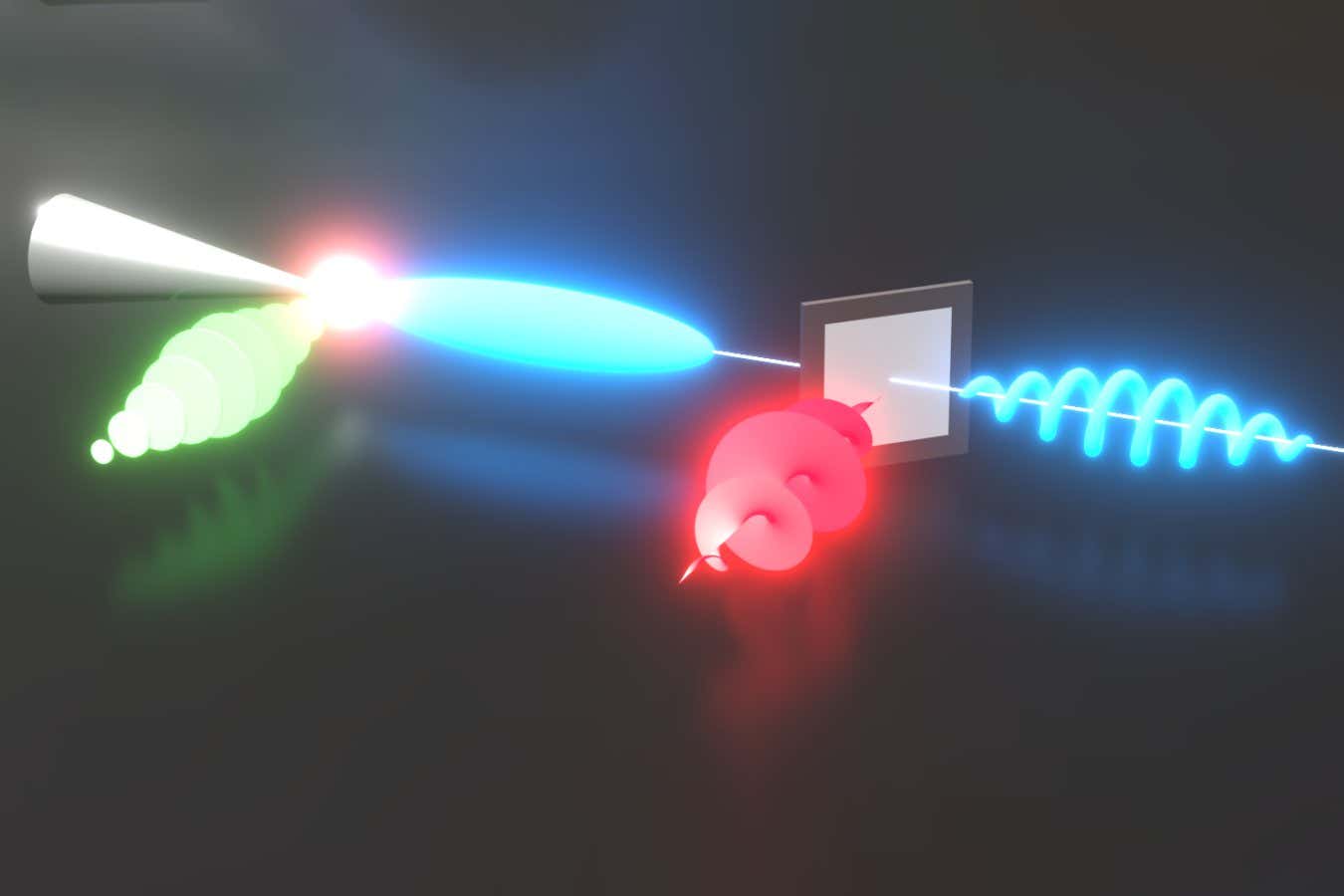
 Science & Environment2 months ago
Science & Environment2 months agoLaser helps turn an electron into a coil of mass and charge
-

 Technology1 month ago
Technology1 month agoUkraine is using AI to manage the removal of Russian landmines
-

 Technology1 month ago
Technology1 month agoSamsung Passkeys will work with Samsung’s smart home devices
-
Business1 month ago
Top shale boss says US ‘unusually vulnerable’ to Middle East oil shock
-
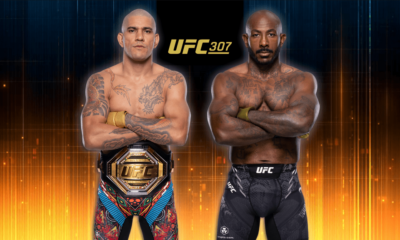
 MMA1 month ago
MMA1 month agoPereira vs. Rountree prediction: Champ chases legend status
-

 News1 month ago
News1 month agoNavigating the News Void: Opportunities for Revitalization
-
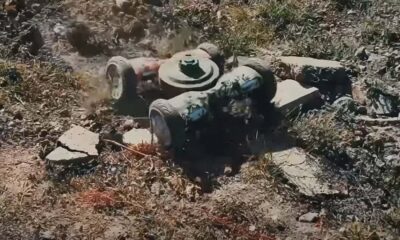
 Technology2 months ago
Technology2 months agoRussia is building ground-based kamikaze robots out of old hoverboards
-

 Science & Environment2 months ago
Science & Environment2 months agoWhy this is a golden age for life to thrive across the universe
-

 News1 month ago
News1 month agoMassive blasts in Beirut after renewed Israeli air strikes
-

 Technology1 month ago
Technology1 month agoGmail gets redesigned summary cards with more data & features
-

 News1 month ago
News1 month agoCornell is about to deport a student over Palestine activism
-
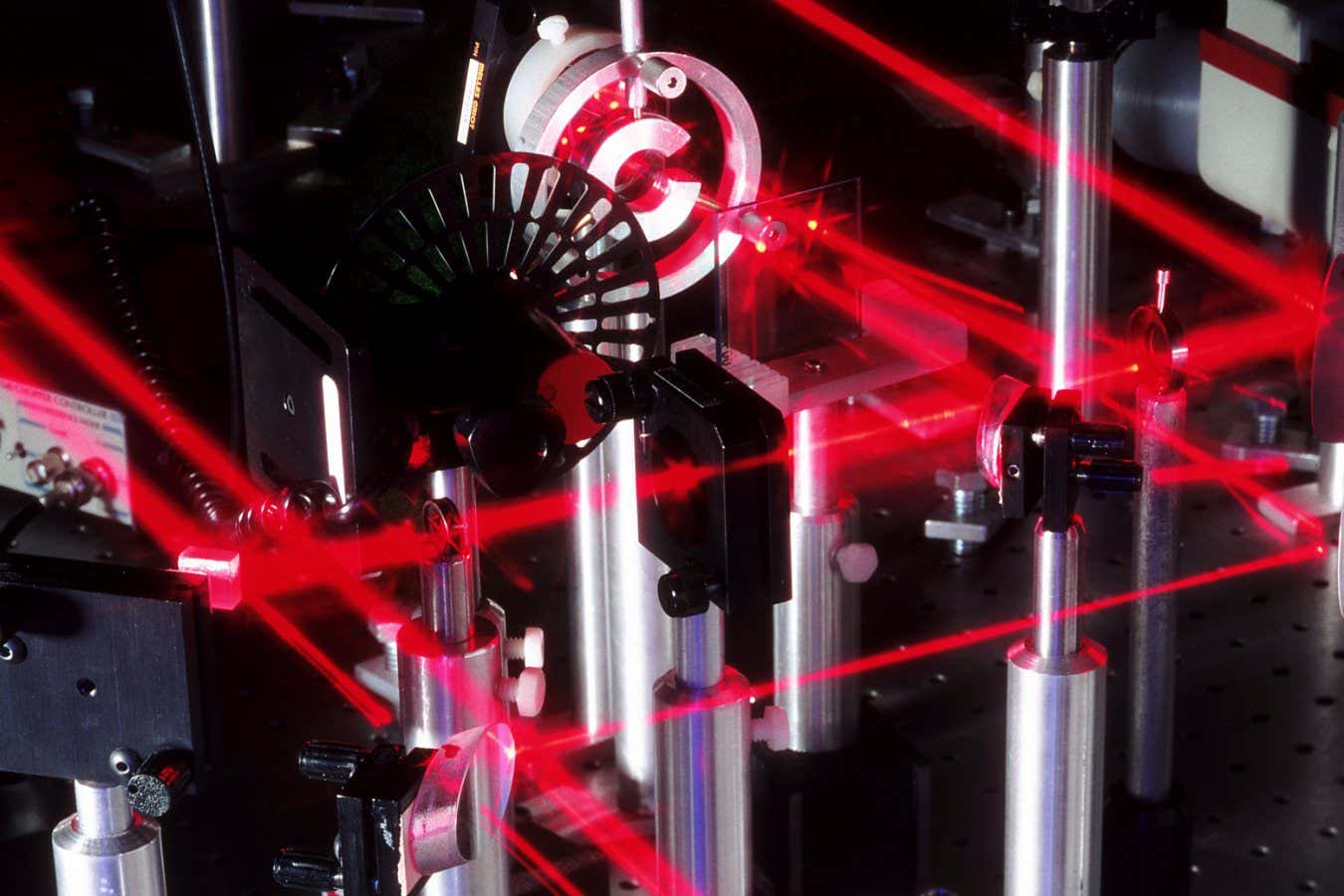
 Science & Environment2 months ago
Science & Environment2 months agoQuantum ‘supersolid’ matter stirred using magnets
-

 Technology1 month ago
Technology1 month agoSingleStore’s BryteFlow acquisition targets data integration
-

 Technology2 months ago
Technology2 months agoMicrophone made of atom-thick graphene could be used in smartphones
-
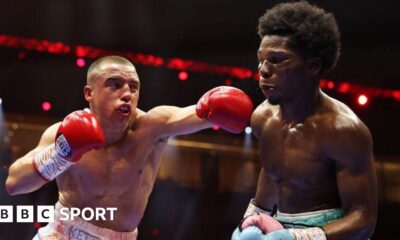
 Sport1 month ago
Sport1 month agoBoxing: World champion Nick Ball set for Liverpool homecoming against Ronny Rios
-

 Entertainment1 month ago
Entertainment1 month agoBruce Springsteen endorses Harris, calls Trump “most dangerous candidate for president in my lifetime”
-
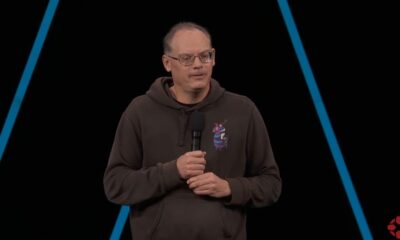
 Technology1 month ago
Technology1 month agoEpic Games CEO Tim Sweeney renews blast at ‘gatekeeper’ platform owners
-
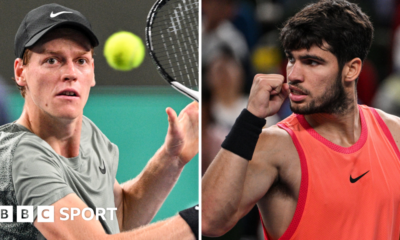
 Sport1 month ago
Sport1 month agoShanghai Masters: Jannik Sinner and Carlos Alcaraz win openers
-

 Money1 month ago
Money1 month agoTiny clue on edge of £1 coin that makes it worth 2500 times its face value – do you have one lurking in your change?
-

 Business1 month ago
Business1 month agoWater companies ‘failing to address customers’ concerns’
-

 MMA1 month ago
MMA1 month agoPennington vs. Peña pick: Can ex-champ recapture title?
-

 Technology2 months ago
Technology2 months agoMeta has a major opportunity to win the AI hardware race
-
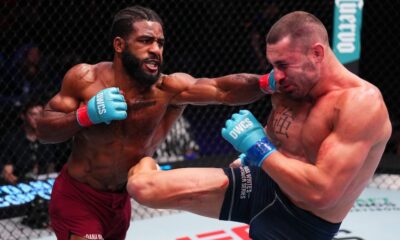
 MMA1 month ago
MMA1 month agoDana White’s Contender Series 74 recap, analysis, winner grades
-

 MMA1 month ago
MMA1 month agoKayla Harrison gets involved in nasty war of words with Julianna Pena and Ketlen Vieira
-
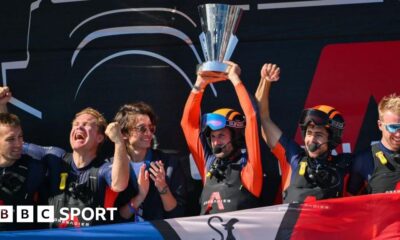
 Sport1 month ago
Sport1 month agoAmerica’s Cup: Great Britain qualify for first time since 1964
-

 Technology1 month ago
Technology1 month agoMicrosoft just dropped Drasi, and it could change how we handle big data
-

 Technology1 month ago
Technology1 month agoLG C4 OLED smart TVs hit record-low prices ahead of Prime Day
-
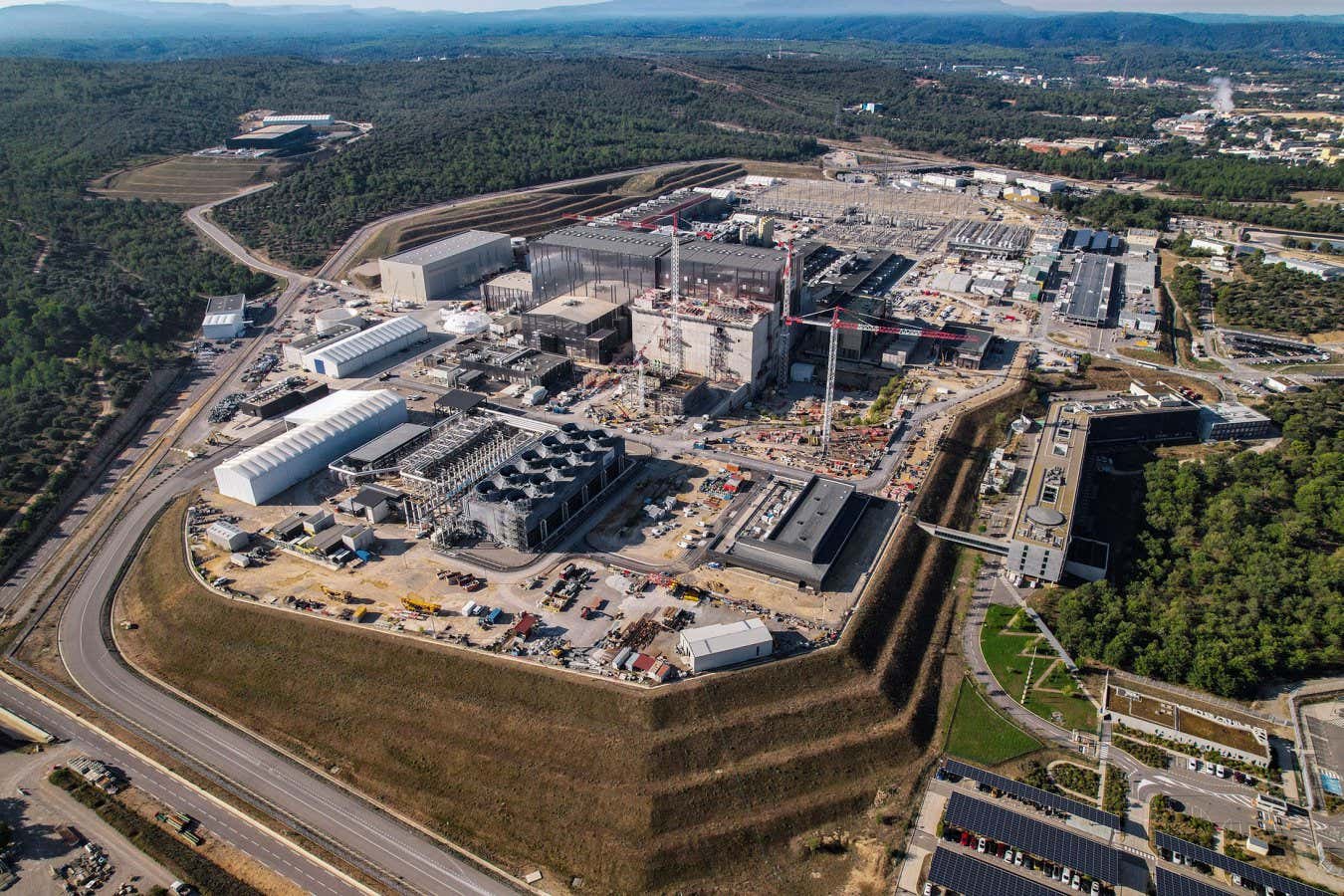
 Science & Environment2 months ago
Science & Environment2 months agoITER: Is the world’s biggest fusion experiment dead after new delay to 2035?
-

 News2 months ago
News2 months ago▶️ Hamas in the West Bank: Rising Support and Deadly Attacks You Might Not Know About
-
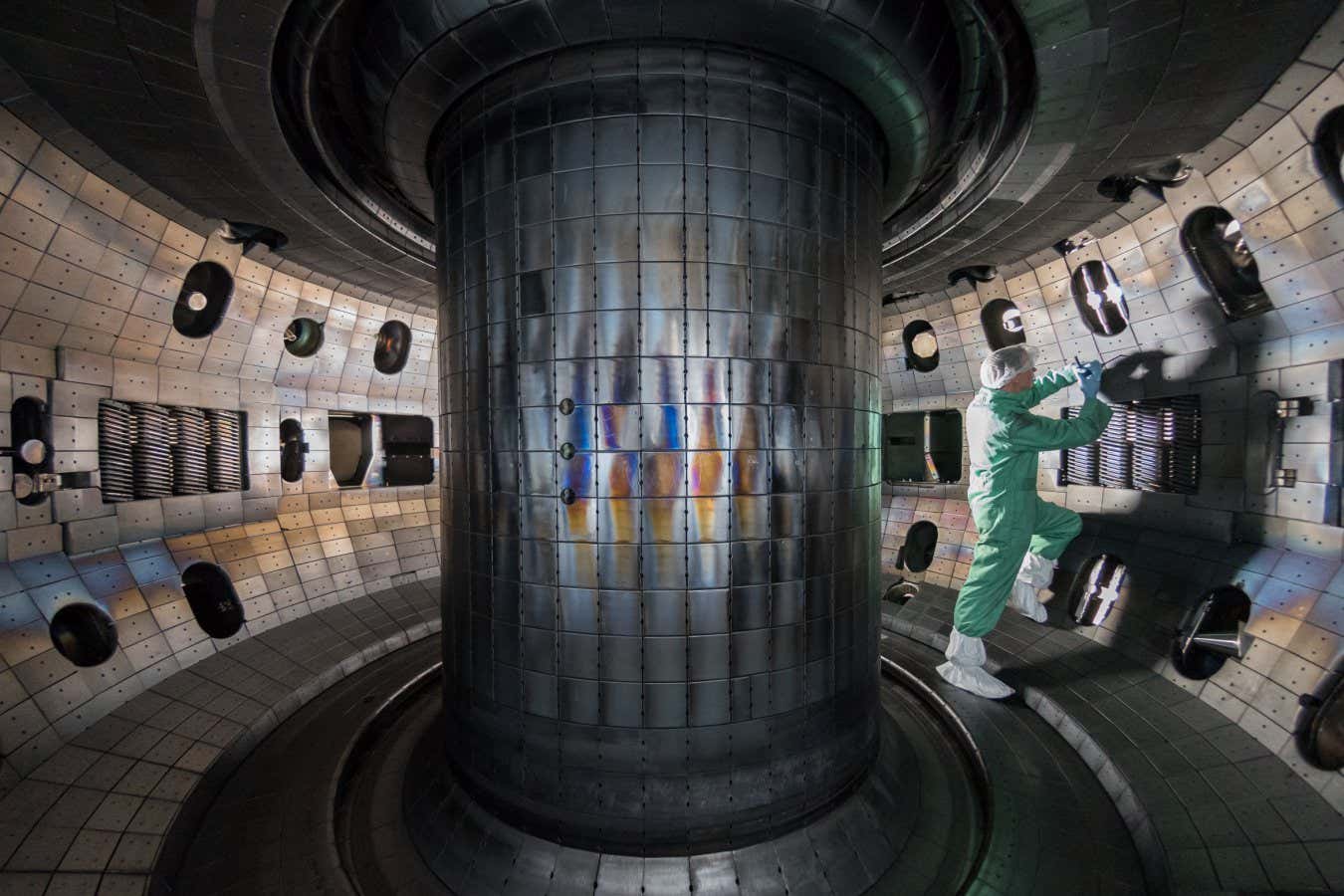
 Science & Environment2 months ago
Science & Environment2 months agoNuclear fusion experiment overcomes two key operating hurdles
-

 News1 month ago
News1 month agoHarry vs Sun publisher: ‘Two obdurate but well-resourced armies’
-
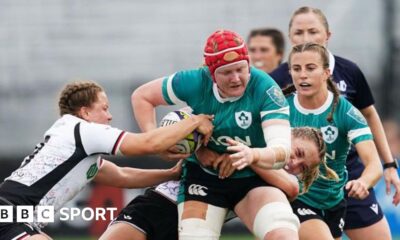
 Sport1 month ago
Sport1 month agoWXV1: Canada 21-8 Ireland – Hosts make it two wins from two
-

 MMA1 month ago
MMA1 month ago‘Uncrowned queen’ Kayla Harrison tastes blood, wants UFC title run
-

 Football1 month ago
Football1 month ago'Rangers outclassed and outplayed as Hearts stop rot'
-

 Science & Environment2 months ago
Science & Environment2 months agoNerve fibres in the brain could generate quantum entanglement
-

 Technology2 months ago
Technology2 months agoWhy Machines Learn: A clever primer makes sense of what makes AI possible
-

 Technology2 months ago
Technology2 months agoUniversity examiners fail to spot ChatGPT answers in real-world test
-
Travel1 month ago
World of Hyatt welcomes iconic lifestyle brand in latest partnership
-

 Sport1 month ago
Sport1 month agoNew Zealand v England in WXV: Black Ferns not ‘invincible’ before game
-

 News1 month ago
News1 month agoRwanda restricts funeral sizes following outbreak
-

 Technology1 month ago
Technology1 month agoCheck, Remote, and Gusto discuss the future of work at Disrupt 2024
-
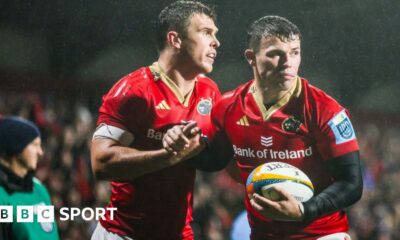
 Sport1 month ago
Sport1 month agoURC: Munster 23-0 Ospreys – hosts enjoy second win of season
-

 TV1 month ago
TV1 month agoসারাদেশে দিনব্যাপী বৃষ্টির পূর্বাভাস; সমুদ্রবন্দরে ৩ নম্বর সংকেত | Weather Today | Jamuna TV
-
Business1 month ago
It feels nothing like ‘fine dining’, but Copenhagen’s Kadeau is a true gift
-
Business1 month ago
Italy seeks to raise more windfall taxes from companies
-
Business1 month ago
The search for Japan’s ‘lost’ art
-

 Business1 month ago
Business1 month agoWhen to tip and when not to tip
-

 News1 month ago
News1 month agoHull KR 10-8 Warrington Wolves – Robins reach first Super League Grand Final
-
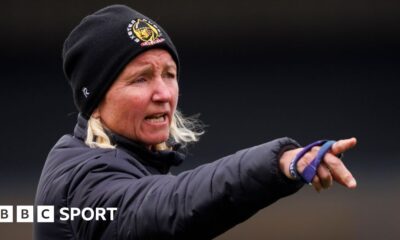
 Sport1 month ago
Sport1 month agoPremiership Women’s Rugby: Exeter Chiefs boss unhappy with WXV clash
-
Politics1 month ago
‘The night of the living dead’: denial-fuelled Tory conference ends without direction | Conservative conference
-
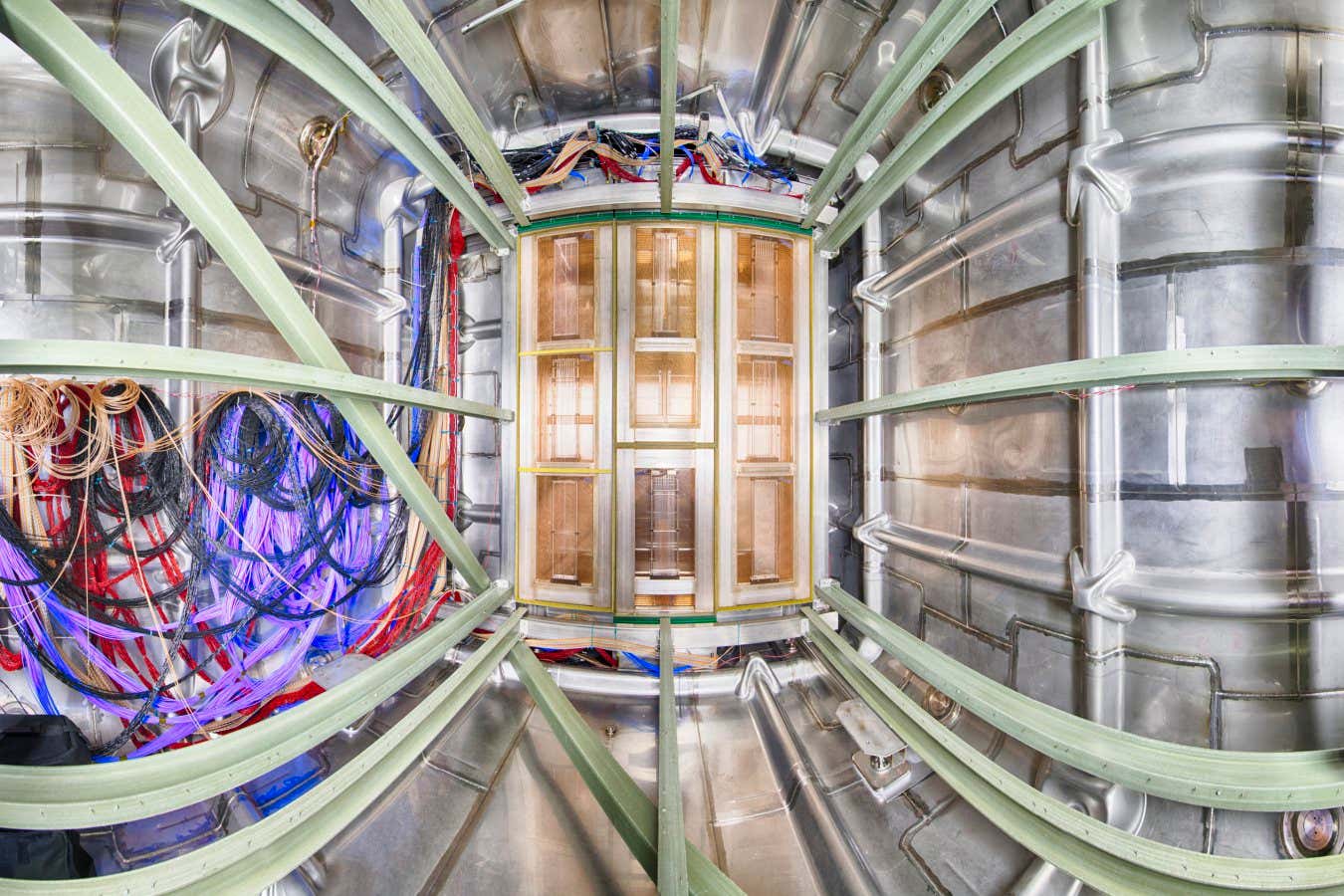
 Science & Environment2 months ago
Science & Environment2 months agoA tale of two mysteries: ghostly neutrinos and the proton decay puzzle
-

 MMA1 month ago
MMA1 month agoHow to watch Salt Lake City title fights, lineup, odds, more
-

 MMA1 month ago
MMA1 month agoStephen Thompson expects Joaquin Buckley to wrestle him at UFC 307
-
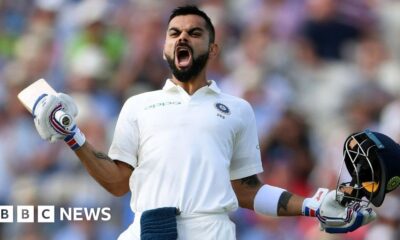
 Sport1 month ago
Sport1 month agoHow India became a Test cricket powerhouse
-
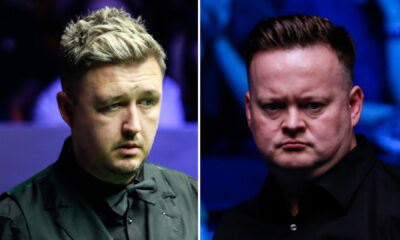
 Sport1 month ago
Sport1 month agoSnooker star Shaun Murphy now hits out at Kyren Wilson after war of words with Mark Allen
-

 Sport1 month ago
Sport1 month agoFans say ‘Moyes is joking, right?’ after his bizarre interview about under-fire Man Utd manager Erik ten Hag goes viral
-
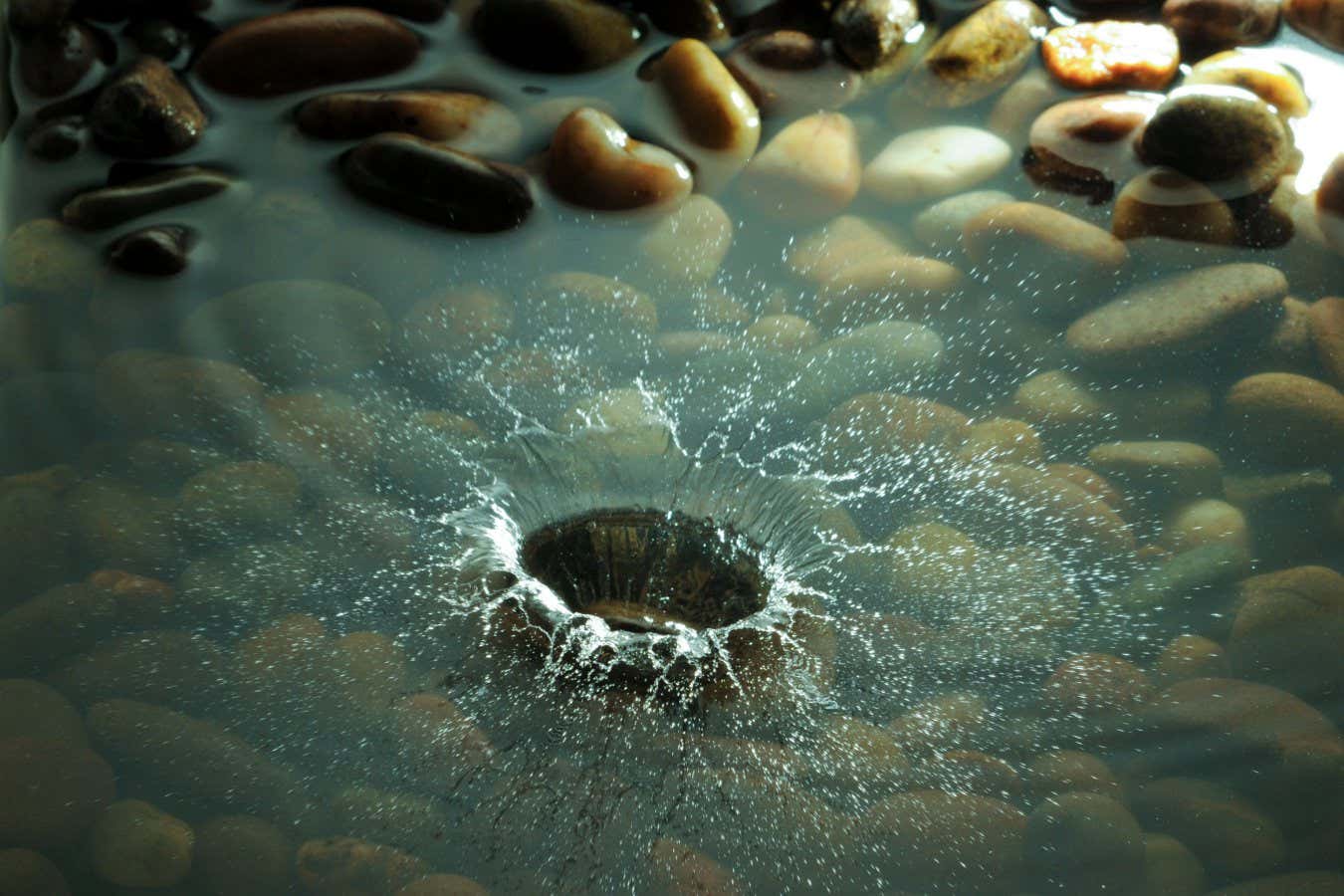
 Science & Environment2 months ago
Science & Environment2 months agoA slight curve helps rocks make the biggest splash
-

 Technology1 month ago
Technology1 month agoNintendo’s latest hardware is not the Switch 2
-

 News1 month ago
News1 month agoCrisis in Congo and Capsizing Boats Mediterranean
-

 Money1 month ago
Money1 month agoThe four errors that can stop you getting £300 winter fuel payment as 880,000 miss out – how to avoid them
-

 Science & Environment2 months ago
Science & Environment2 months agoHow to wrap your mind around the real multiverse
-

 News2 months ago
News2 months ago▶️ Media Bias: How They Spin Attack on Hezbollah and Ignore the Reality
-

 TV1 month ago
TV1 month agoTV Patrol Express September 26, 2024
-

 Football1 month ago
Football1 month agoFifa to investigate alleged rule breaches by Israel Football Association
-

 Football1 month ago
Football1 month agoWhy does Prince William support Aston Villa?
-
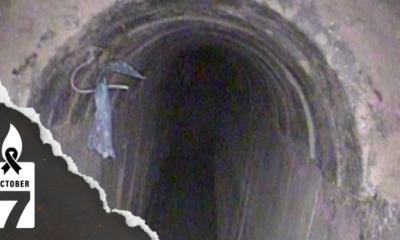
 News1 month ago
News1 month ago▶ Hamas Spent $1B on Tunnels Instead of Investing in a Future for Gaza’s People
-

 Technology1 month ago
Technology1 month agoSamsung Galaxy Tab S10 won’t get monthly security updates
-

 News1 month ago
News1 month agoUK forces involved in response to Iran attacks on Israel
-

 Technology1 month ago
Technology1 month agoMusk faces SEC questions over X takeover
-
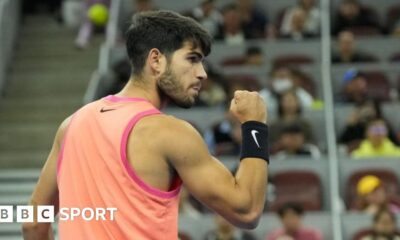
 Sport1 month ago
Sport1 month agoChina Open: Carlos Alcaraz recovers to beat Jannik Sinner in dramatic final
-
Business1 month ago
Bank of England warns of ‘future stress’ from hedge fund bets against US Treasuries
-

 Technology1 month ago
Technology1 month agoJ.B. Hunt and UP.Labs launch venture lab to build logistics startups
-

 Sport1 month ago
Sport1 month agoSturm Graz: How Austrians ended Red Bull’s title dominance
-

 Sport1 month ago
Sport1 month agoBukayo Saka left looking ‘so helpless’ in bizarre moment Conor McGregor tries UFC moves on Arsenal star
-

 Sport1 month ago
Sport1 month agoCoco Gauff stages superb comeback to reach China Open final
-

 Sport1 month ago
Sport1 month agoMan Utd fans prepare for ‘unholy conversations’ as Scott McTominay takes just 25 seconds to score for Napoli again
-

 Sport1 month ago
Sport1 month agoPhil Jones: ‘I had to strip everything back – now management is my focus’
-

 Sport4 weeks ago
Sport4 weeks agoSunderland boss Regis Le Bris provides Jordan Henderson transfer update 13 years after £20m departure to Liverpool
-

 Womens Workouts2 months ago
Womens Workouts2 months ago3 Day Full Body Women’s Dumbbell Only Workout
-

 Science & Environment2 months ago
Science & Environment2 months agoTime travel sci-fi novel is a rip-roaringly good thought experiment

You must be logged in to post a comment Login